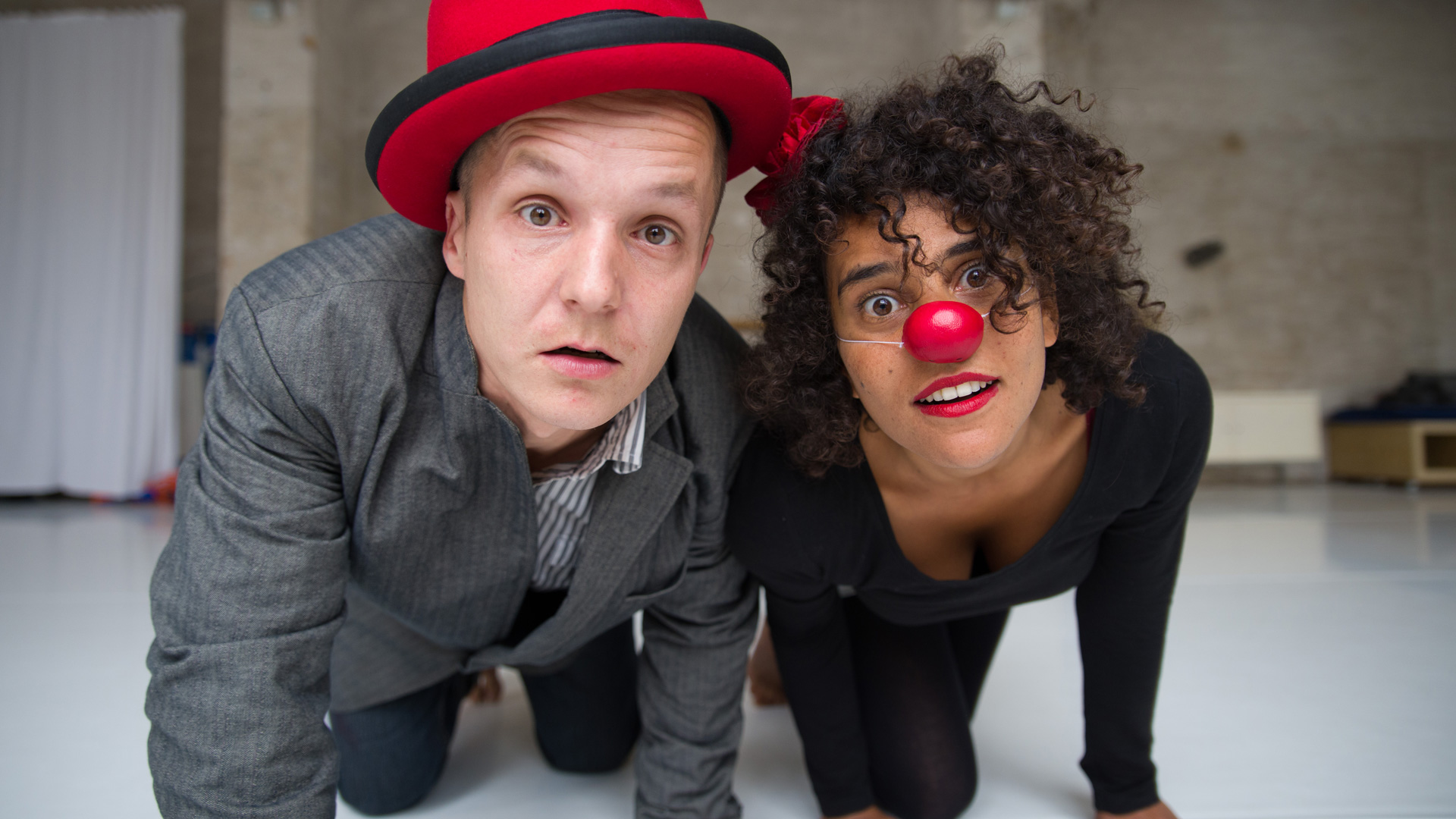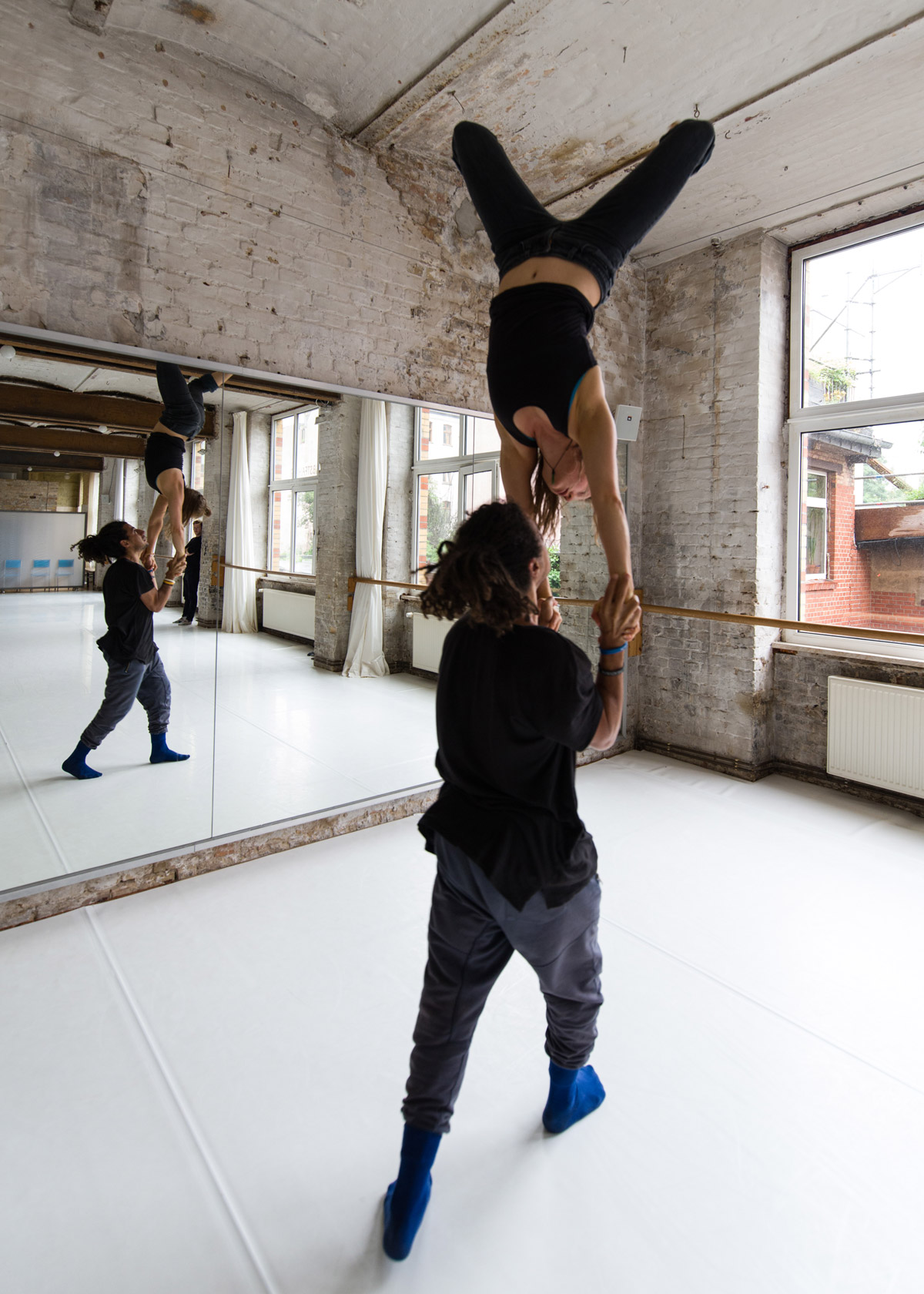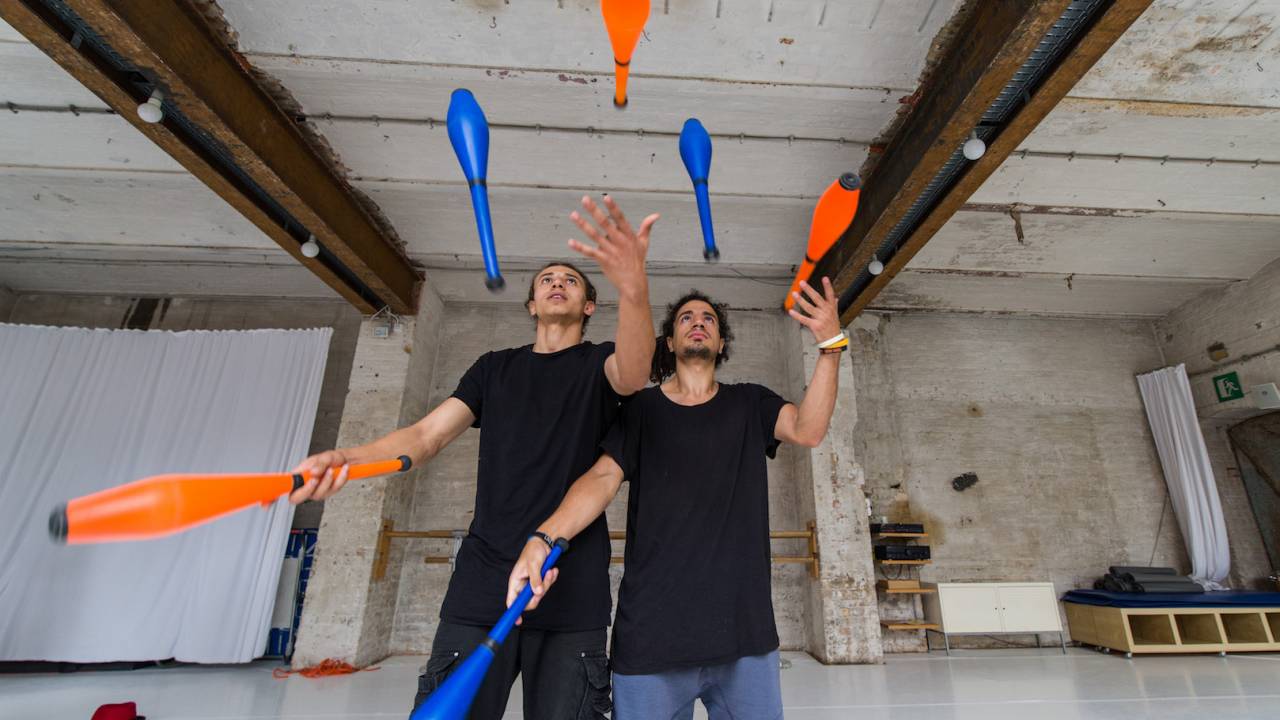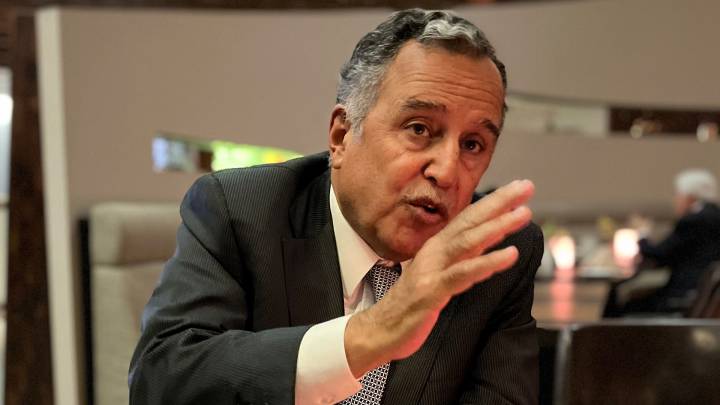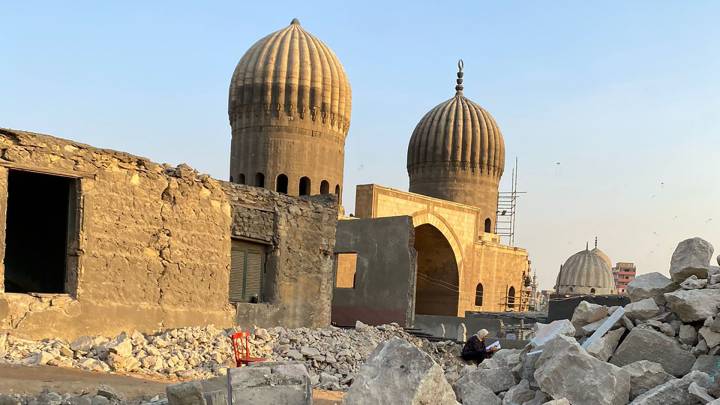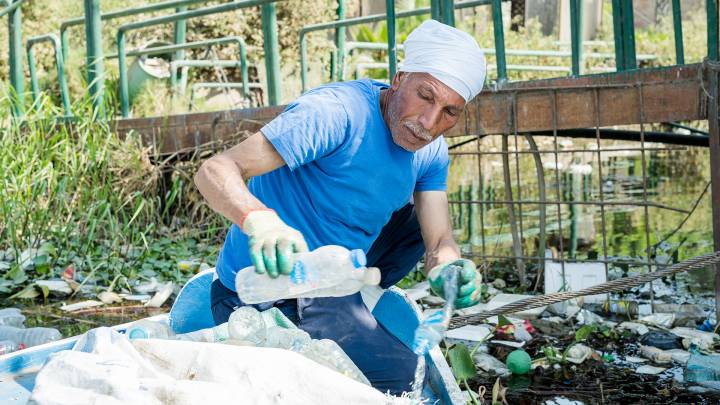Egypt’s turbulent last years have left its society even more divided. Koshari, a contemporary circus project, aims to bring Egyptian society closer together through artistic street performances.
A circus tent stands in a fairly lacklustre corner of Altglienicke, a tranquil eastern suburb of Berlin. The bright red and yellow stripes of the tent are juxtaposed with the grey concrete of the socialist housing blocks – a contrast in keeping with the long-established role of the circus to occasionally light up the dull daily routine of its audience.
Stereotypes of circuses are pretty standard. A bizarrely dressed clown retelling harmless jokes. A moderately sad looking, verminous and probably single-eyed lion being tamed. Acrobats walking a tightrobe. Rataplan.
We were locked up by the police in a youth centre and banned from performing.
But the performance in Altglienicke has little such imagery. No fire-eaters. No sword-swallowing. No exotic animals. Instead, there’s a restrained stage set remarkably lacking in paraphernalia and a cultural vibe common to contemporary art. Apparent creative disorder belies a high level of artistic mastery. The only animal on stage is a stuffed toy crocodile.
The group performing is Koshari Circus, a German-Egyptian project named after an Egyptian street food dish with a sundry mix of ingredients. Similarly, the team is made up of artists hailing from diverse art forms such as clowning, parkour, acrobatics, contemporary dancing and acting. The circus, based in Cairo, has come to Germany on a one-month residence in order to network with cultural actors, and to practise and perform at an international circus festival in Berlin.
With a background in both the independent scene and cultural institutions in Germany and Egypt, the creative collective has been playing shows and giving workshops in Egypt in the past. Initially, most Koshari members came together during a turbulent circus tour through the Nile Delta. Performing in small villages, the Koshari predecessor project was met with a curiosity bordering on suspicion from locals unused to public circus performances.
“Sometimes, the villagers shouted and even threw water bottles at us,” recalls Noha Khattab, a trained anthropologist turned clown. “As public performances are nothing regular here, you will always get a reaction, sometimes positive and sometimes quite negative, whatever you do.”
Humour played an important role in warming up the audiences. In Egypt, probably like anywhere else in the world, jokes often revolve around economic and political hardships, as a means of coming to terms with the little traumas of everyday life. By confronting people with their personal struggles, humour can ultimately become a catalyst for social change.
However, this was not welcomed by everyone. At one point during the tour, the artists even found themselves in police custody.
“I think we sparked too much attention,” says Carsten Arst, an actor and cultural veteran from Magdeburg. “Consequently, we were locked up by the police in a youth centre and banned from performing. But we really wanted to perform in that village, so we just started to put our costumes on and played music from inside.”
Within minutes, local people had gathered outside the youth centre. The situation quickly morphed into something of a party, until the police opened the doors, demanding that the circus leave the village immediately, accompanied by an armed police escort.
The artists followed the official order – but adapted it slightly. Cheered on by locals, the artists turned their departure into a carnival parade through the entire village. While some police officers were relatively unbothered, others just wanted the circus to stop.
“Such public performances require a certain level of openness. Something will happen, there is always some unscripted interaction. And that’s what the officials feared,” explains pantomime artist Gerges Nessim. Against a backdrop of increased pressure by the regime, including crackdowns on independent cultural institutions and human rights activists, a contemporary circus performance represents a slice of liberty usually not permitted in Egypt.
Back to Altglienicke. “The funny thing is we had this realisation about art,” says Noha Khattab. “Contemporary circus is very fresh and new for Egyptians, but probably also for Germans. We are experimenting with different elements of physical theatre – acrobatics, storytelling, music. And the richness of all of these elements is something very powerful. It is an experiment itself. So experiencing contemporary circus will be intense for everyone.”
With the country’s turbulent recent past, Egyptians are probably just a bit more overwhelmed than most.
